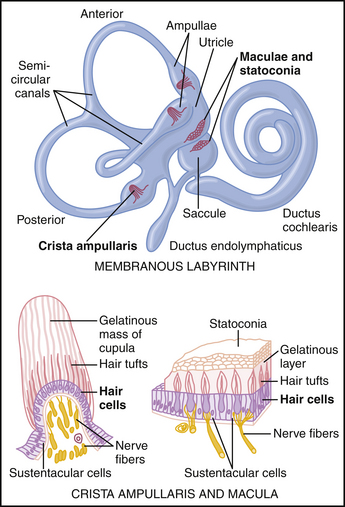48 CASE 48
PATHOPHYSIOLOGY OF KEY SYMPTOMS
The vestibular system is a complex sensory organ that determines both acceleration and position relative to gravity. There are three semicircular canals oriented at right angles to each other so that movement in all three planes in space can be detected. The hair cells of the crista ampullaris detect movement of the fluid within the semicircular canal and transmit this information along the sensory nerves of the vestibular system. The macula of the utricle and saccule contains small calcium carbonate stones that activate hair cells and thus detect the orientation of the head with respect to gravity as well as linear acceleration (Fig. 48-1).
< div class='tao-gold-member'>
Only gold members can continue reading. Log In or Register to continue
Stay updated, free articles. Join our Telegram channel

Full access? Get Clinical Tree



